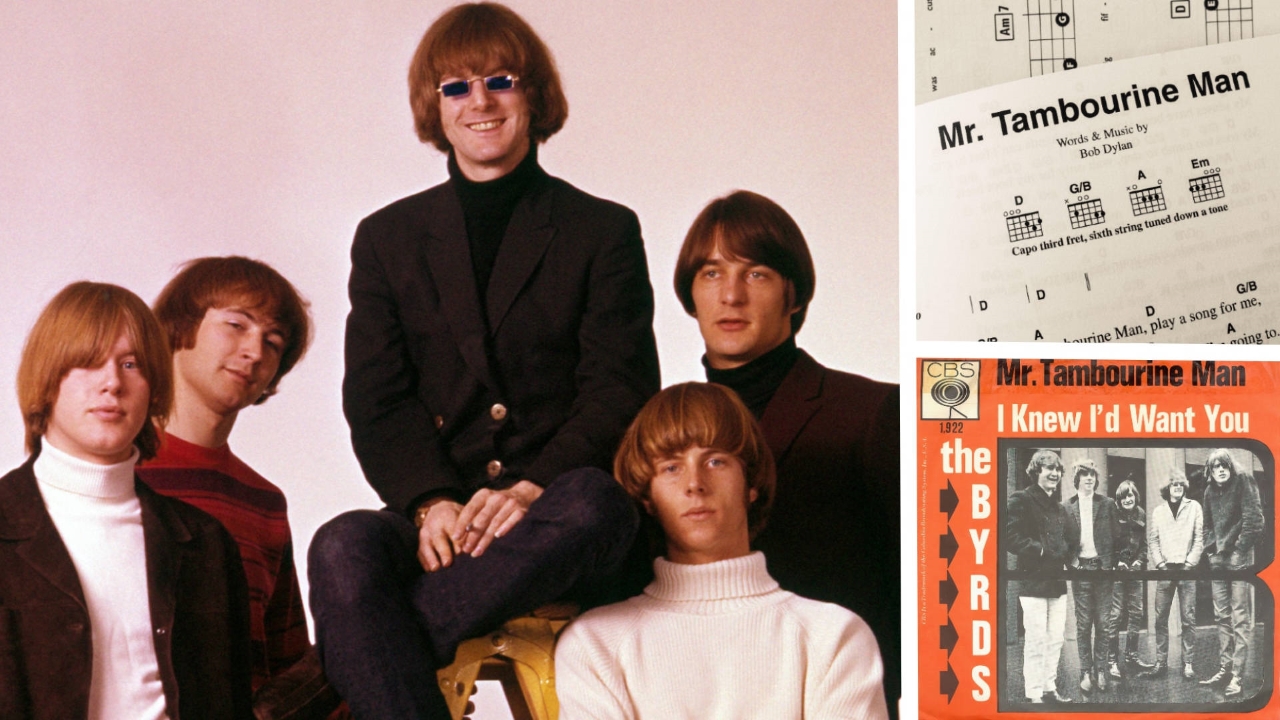
About the song
“Mr. Tambourine Man” marked a seismic moment in music history — not just for The Byrds, but for the future of folk and rock. Originally written and recorded by Bob Dylan, the song was reimagined by The Byrds in 1965, turning a poetic acoustic ballad into a jangly, radio-ready folk-rock masterpiece. Their version became an instant hit, launching the band’s career and helping define an entire genre.
Though Bob Dylan’s original was introspective and surreal — stretching over five minutes — The Byrds streamlined it, using only one of the verses and layering it with chiming 12-string Rickenbacker guitar, tight vocal harmonies, and a driving beat. The transformation was so powerful that many listeners didn’t even realize it was a Dylan song.
The story behind the song:
Bob Dylan had recorded “Mr. Tambourine Man” in early 1964, inspired by folk music, Beat poetry, and his own psychedelic experiences. When The Byrds — led by Roger McGuinn, Gene Clark, and David Crosby — got their hands on it, they sensed its potential as a bridge between the lyrical depth of folk and the electric energy of rock.
Producer Terry Melcher helped shape the sound, bringing in top session musicians from the Wrecking Crew to record the instrumental backing for the single (a common practice at the time), while McGuinn laid down his now-iconic lead vocal and jangly guitar work. The result was a revolutionary blend that became known as folk rock.
Impact and legacy:
Released in April 1965, “Mr. Tambourine Man” soared to No. 1 on the Billboard Hot 100 and also topped the UK Singles Chart — a rare feat for a debut single. It introduced Dylan’s lyrics to a much broader pop audience and gave The Byrds their signature sound, one that would influence artists from Tom Petty to R.E.M. and beyond.
The song also helped usher in a new era of lyrical sophistication in popular music. Suddenly, hit singles could be poetic, abstract, even existential — and still get played on the radio.
Rolling Stone magazine later ranked Dylan’s version No. 107 on its list of “The 500 Greatest Songs of All Time,” while The Byrds’ rendition is celebrated for pioneering a new musical movement.
Final thoughts:
The Byrds’ “Mr. Tambourine Man” is a perfect example of how interpretation can redefine a song. Where Dylan wandered dreamily through words and visions, The Byrds soared — bright, concise, and radio-friendly. Yet the soul of the song remained intact: a call to escape, to dream, to let go of time and be carried away by the music.
It’s not just a relic of the ‘60s — it’s a reminder of music’s power to transform, to transcend, and to create something entirely new from something already beautiful.
Video
Lyrics
Hey, Mr. Tambourine man, play a song for meI’m not sleepy and there ain’t no place I’m going toHey, Mr. Tambourine man, play a song for meIn the jingle jangle morning, I’ll come followin’ youTake me for a trip upon your magic swirling shipAll my senses have been strippedAnd my hands can’t feel to grip and my toes too numb to stepWait only for my boot heels to be wanderingI’m ready to go anywhere, I’m ready for to fadeInto my own paradeCast your dancing spell my wayI promise to go under itHey, Mr. Tambourine man, play a song for meI’m not sleepy and there ain’t no place I’m going toHey, Mr. Tambourine man, play a song for meIn the jingle jangle morning, I’ll come followin’ you